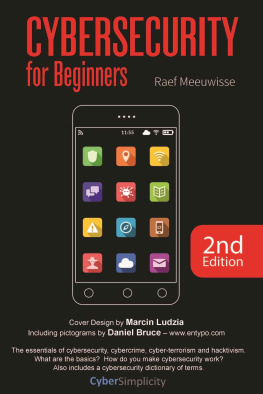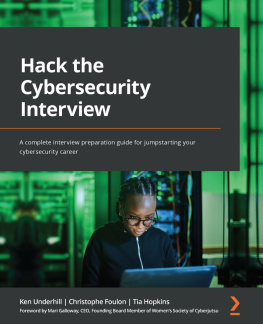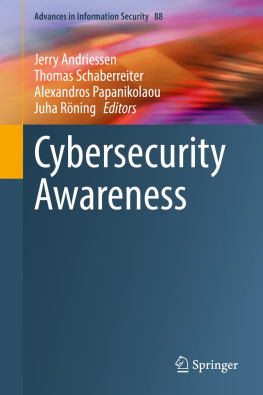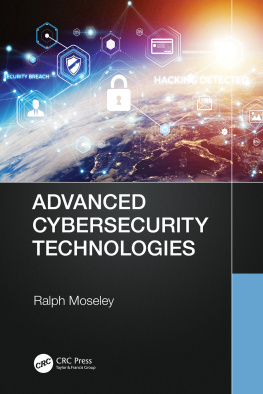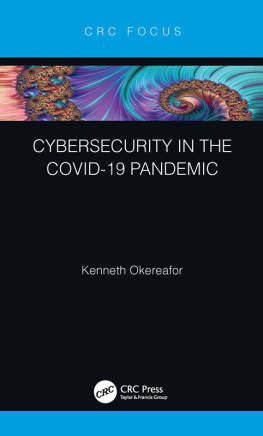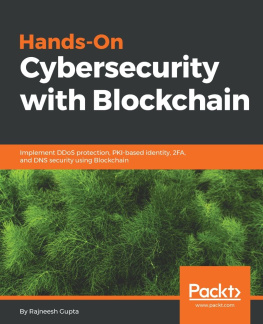Explores the causes for the increased magnitude and frequency of cybercrime. Why is cybersecurity frequently left vulnerable to attack? Is there a set of principles that can be applied to help correct the problems? A great follow-on read from Cybersecurity for Beginners.
A useful companion for anyone who wants to keep up with cybersecurity terms or confound others with their understanding. Finally, cybersecurity does not need to sound like a different language. An expanded version of the section at the end of this book with hundreds of additional cybersecurity terms defined.
Writing down your passwords is usually fraught with risks. The Encrypted Pocketbook of Passwords helps you to store your passwords more securely in a format that you can read but that others will find hard to break.
Guidance on the basic security practices we can apply at home or in small businesses to help decrease the risk of being successfully attacked.
A fun crime, comedy fiction for release in November 2017. When a cybersecurity specialist dies in suspicious circumstances, who is his mysterious replacement and just what is her agenda?
A low cost microbook providing guidance on the basic security practices we can apply to protect our online devices and the services we subscribe to.
Visit www.cybersimplicity.com for a full list of our latest titles.
you dont know enough about it.
Chapter Outline
1: Cybersecurity & Its Origins.
Describes how reliant we have become on our electronic devices and the reasons that we all need to be concerned about cybersecurity.
2: About the Case Studies.
Establishes the format, content and purpose of the case studies and provides some initial terminology definitions.
3: Case Study: Target 2013.
Uses facts from the theft of over 40 million customer cardholder details to demonstrate that cybersecurity breaches tend to result from a long list of security gaps.
4: The Disciplines Within Cybersecurity.
Begins to introduce the list of skills required to put together a cybersecurity team.
5: Case Study: Edward Snowden 2013.
Reinforces the fact that breaches are not due to a single gap. Introduces insider threats and the importance of human factors to cybersecurity.
6: Basic Cybersecurity Concepts.
Demonstrates how common sense is still at the core of cybersecurity. Introduces existing, established approaches used to combat threats.
7: Human Factors.
Technology does not fail without human involvement. Outlines how and why people are considered the weakest links in the cybersecurity chain.
8: Technical Factors.
Looks at the core of current cybersecurity approaches; examines the technical protections typically used to protect against the threats.
9: Evolving Attack & Defense Methods.
Reviews how attack and defense methods are evolving.
10: Case Study: Sony 2014.
Brings together how human and technical factors can combine to create devastating consequences in a very recent example.
11. The Cybersecurity Cold War.
Covers the range of different organizations and individuals that are looking to benefit from cybersecurity gaps and what their motives are.
12. Risk-Based Cybersecurity & Stacked Risks.
Increases understanding of how to measure risks more thoroughly and protect against chains of risks forming and failing together.
13. How Cyber Exposed Are You?
Provides some simple, logical self-checks to instantly understand how confident you are (or are not) about your organizations cybersecurity status.
14. What To Do When Things Go Wrong .
How to manage Security Incidents through a logical process.
15. A Glimpse Toward the Future.
Predicts the major technical changes expected over the next 10 years and then looks out as far as 2050 to understand where cybersecurity is headed.
16. Bringing It All Together.
Pulls all of the aspects of cybersecurity that have been discussed in the book together to reinforce readers confidence in understanding cybersecurity, where it fails and how to put effective defenses in place.
Cybersecurity To English (Definitions)
An A-to Z list of cybersecurity-related terms in this book.
Note that an expanded version of the Cybersecurity to English Dictionary is available to purchase separately.
Nobody ever made a statue to honor a committee
Preface
This is the second edition of this book. While cybersecurity concerns continue to multiply, there are still very few good introductory books on the subject of cybersecurity. The reasons are simple:
- Most cybersecurity experts get paid too much to write books.
- Most of us are really busy.
- Very few of us know what we are doing well enough to put our reputation on the line by writing a book on the subject.
We also have to keep up to date. The subject area is evolving fast.
As I prepare the second edition, there is still no global consensus on how to write the word cybersecurity. Is it one word or two? In the US, the Department of Homeland Security (DHS), the National Institute of Standards and Technology (NIST) and ISACA (the Information Security Audit and Control Association) use the one word version. So does this book. In the UK, they continue to split the term into two words: cyber security.
After attending multiple information security and cybersecurity conferences each year, often as a speaker, I began to realize in discussions with literally hundreds of professionals just how little concise and reliable information was available in the public domain. As information and cybersecurity professionals constantly try to keep up with what the latest threats are and with how to effectively measure, manage and monitor them, the books and other resources they create tend to be geared toward other IT (information technology) professionals.

